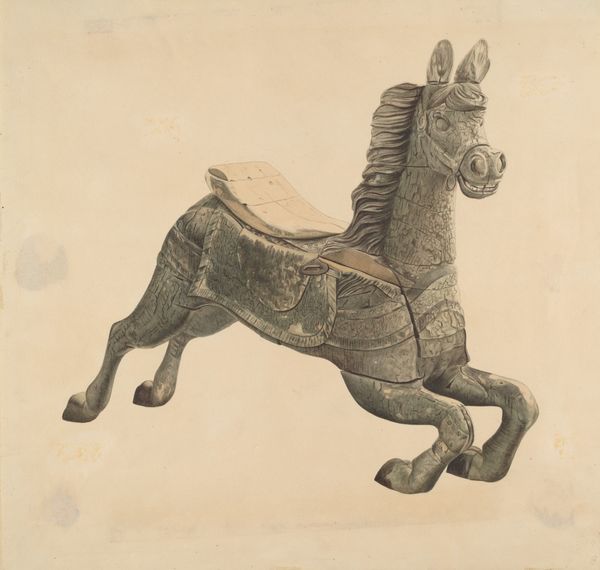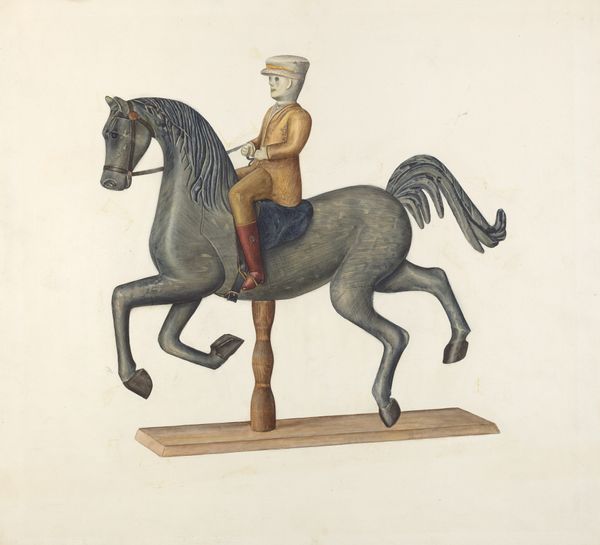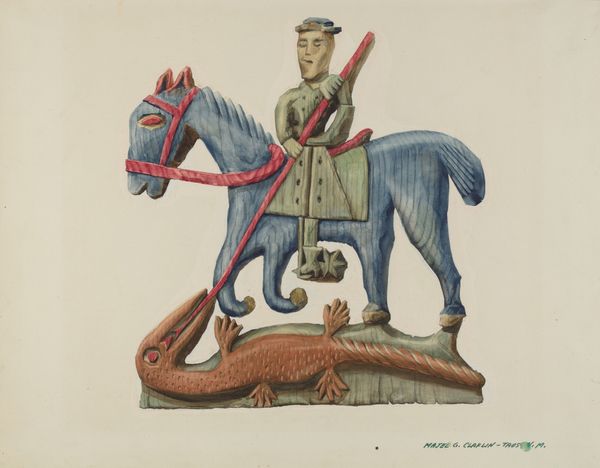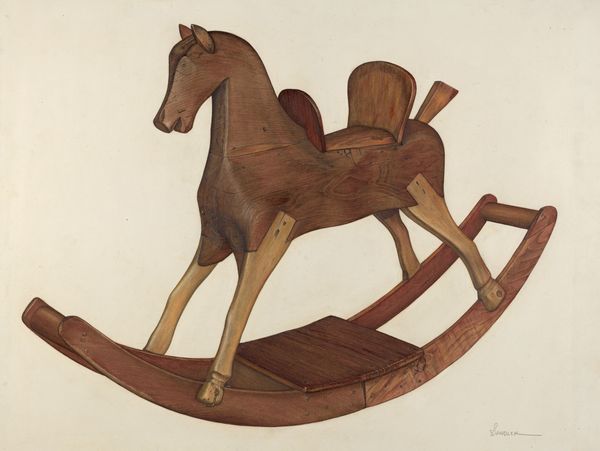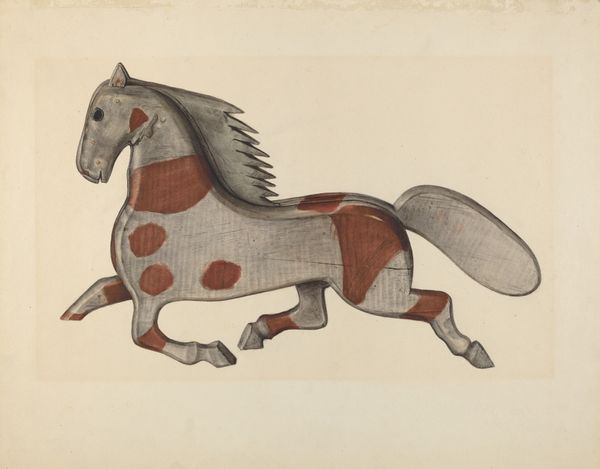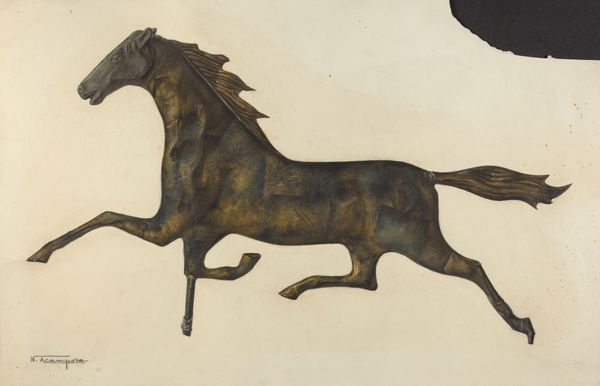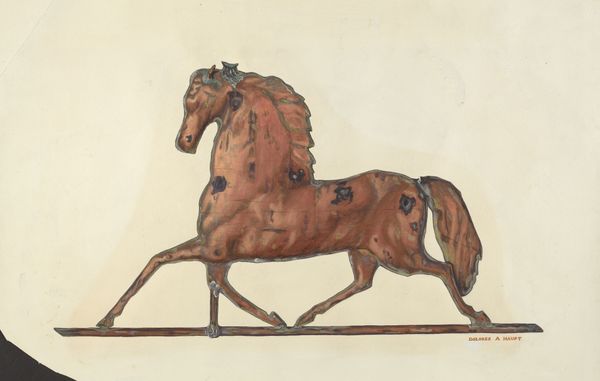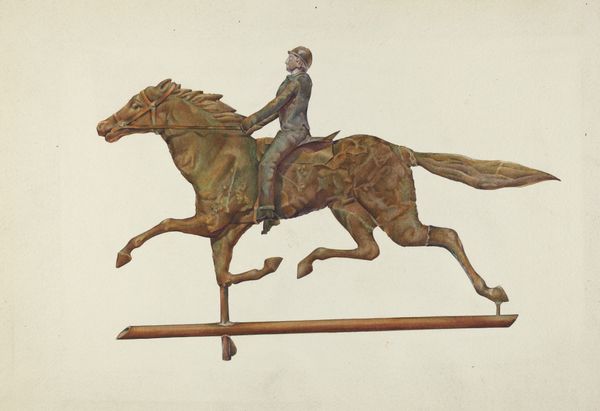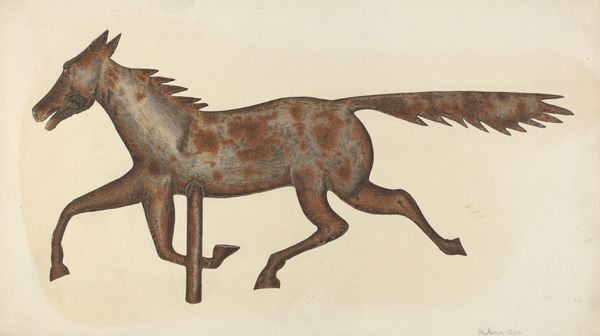
drawing, coloured-pencil, pencil
#
drawing
#
coloured-pencil
#
charcoal drawing
#
figuration
#
coloured pencil
#
pencil
#
watercolour illustration
Dimensions: overall: 35.3 x 47.1 cm (13 7/8 x 18 9/16 in.) Original IAD Object: 36" wide; 28 1/2" high
Copyright: National Gallery of Art: CC0 1.0
Editor: So, here we have John Davis's "Weather Vane," made around 1937, using charcoal and colored pencil. I'm immediately struck by the almost carved quality of the figures, despite it being a drawing. It's a really dynamic composition with the Native American figure, the horse, and the panther all intertwined. What do you see in this piece, from an art historical perspective? Curator: What interests me is how the artist constructs spatial depth and the surface through line and color. Observe how Davis employs hatching to create volume and texture on each figure. This linear treatment contrasts with the flatter, more simplified rendering of the figures' outlines, pushing forward a symbolic rather than purely representational reading. Notice also how color highlights edges: what do you make of this formal choice? Editor: It feels like he is emphasizing the object-ness of each shape, drawing attention to their individual forms and how they relate. Is it accurate to say it also feels primitive and refined, or intentionally unschooled? Curator: Exactly! We see that dual treatment playing out across the artwork's semiotic registers. Consider the tension between the smooth planes of color and the etched textures suggesting material, challenging any singular interpretation. Where does that contrast ultimately lead? Editor: I think it emphasizes the artistry, calling attention to the artist's choices. I now notice how carefully the composition leads our eye from figure to figure, not naturally, but to create a scene. Thank you for this alternative perspective on the role of composition here. Curator: And I appreciate your close reading of that artfulness, allowing us to question our assumptions about its narrative content, no matter the culture it derives from.
Comments
No comments
Be the first to comment and join the conversation on the ultimate creative platform.

